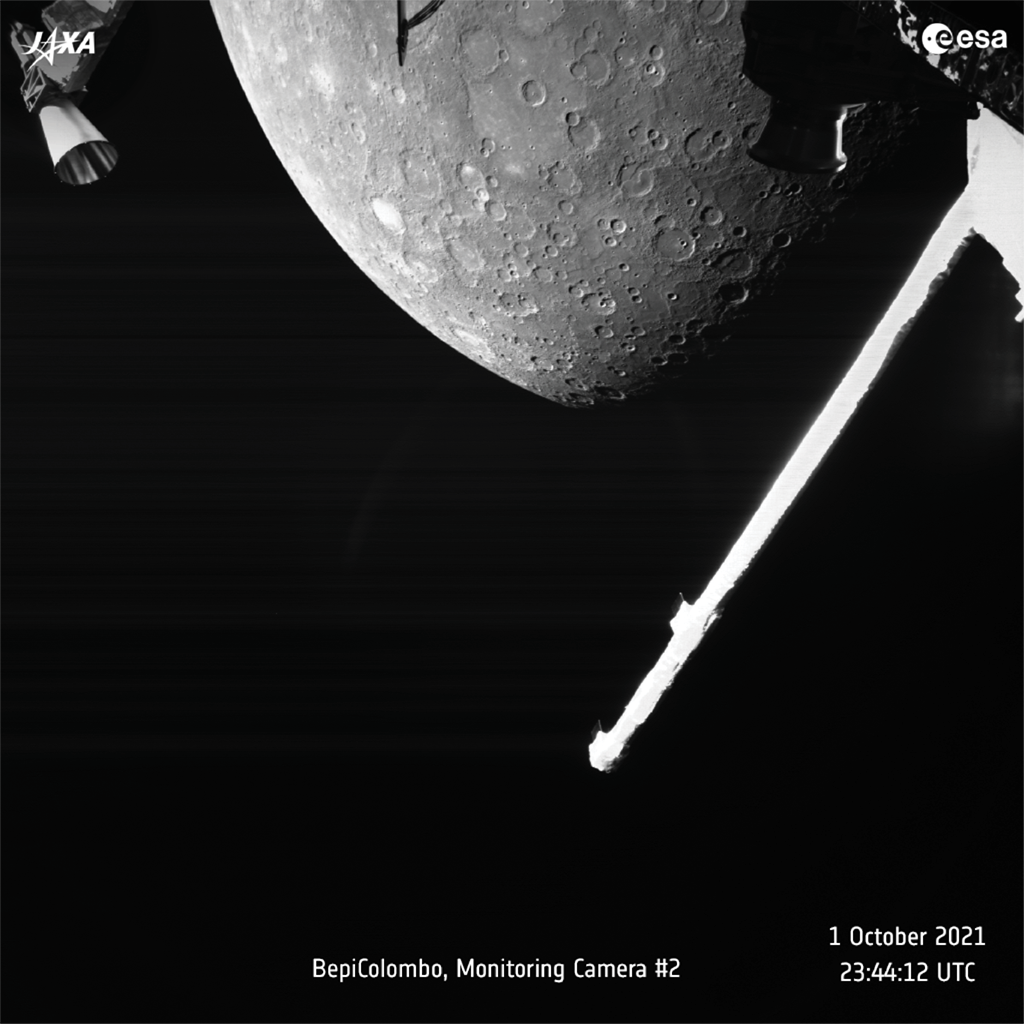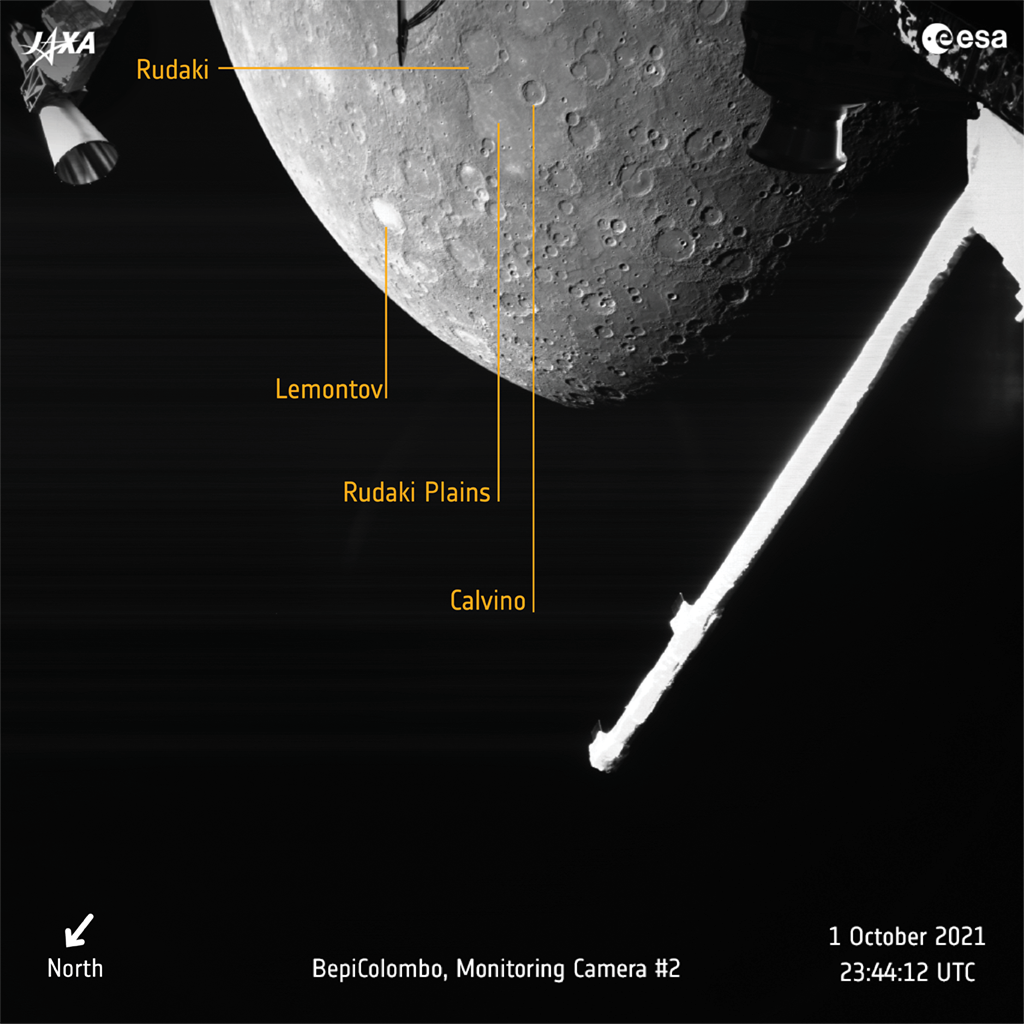
ESA/BepiColombo/MTM, CC BY-SA 3.0 IGO
- BepiColombo, a European–Japanese spacecraft, flew past Mercury for the first time Friday.
- The probe beamed back beautifully clear images of the planet's cratered, moon-like surface.
- It's set to fly past Mercury five more times before falling into the planet's orbit in 2025.
- See more stories on Insider's business page.
Mercury is finally back in the spotlight, with a space probe zooming past its cratered surface for the first time in six years.
As it flew past Mercury on Friday, the BepiColombo spacecraft snapped the above photo from 1,500 miles (2,418 kilometers) away, about 10 minutes after skimming past the planet. The image shows ancient lava fields in Mercury's northern hemisphere.
This is BepiColombo's first good look at its target planet since it launched in 2018. The spacecraft is a joint mission of the European Space Agency (ESA) and Japan Aerospace Exploration Agency (JAXA). It's on track to fall into orbit around Mercury in 2025, when it will map the planet's surface, analyze its composition, and sense its magnetic field. Scientists hope all this data will reveal the history of the closest planet to the sun.
But first, BepiColombo has to swing past Earth, Venus, and Mercury, leveraging the planets' gravity to pull itself toward its ultimate orbital path. The spacecraft has already flown past Earth and Venus. Friday marked the first of six Mercury flybys.
"The flyby was flawless from the spacecraft point of view, and it's incredible to finally see our target planet," Elsa Montagnon, the mission's spacecraft operations manager, said in a press release.
The last time a spacecraft flew this close to Mercury was in 2015, when NASA's Messenger probe took one last look at the planet's craters before crashing into its surface.
BepiColombo's footage shows Mercury fading into the distance
BepiColombo's Mercury photos are so detailed that scientists can identify particular craters, named Rudaki, Lemontov, and Calvino.

ESA/BepiColombo/MTM, CC BY-SA 3.0 IGO
But BepiColombo isn't even using its best lens yet. The images from Friday's flyby come from its black-and-white monitoring cameras, but the spacecraft also has a high-resolution camera suite that it will deploy once it finally achieves Mercury orbit.
The ESA assembled 53 images from BepiColombo's flyby into a video, below, to show the planet fading into the distance as the spacecraft zipped away.
At its closest approach, the spacecraft was just 124 miles (199 kilometers) above Mercury's surface - but it was on the side of the planet farthest from the sun, engulfed in nighttime darkness.
BepiColombo didn't get a good look at Mercury until it had already zipped past and the planet's sunny side came into view. The closest image in this sequence is about 620 miles (1,000 km) from Mercury.
"It was very exciting to see BepiColombo's first images of Mercury, and to work out what we were seeing," David Rothery, who leads the ESA's Mercury Surface and Composition Working Group, said in the release. "It has made me even more enthusiastic to study the top quality science data that we should get when we are in orbit around Mercury, because this is a planet that we really do not yet fully understand."
